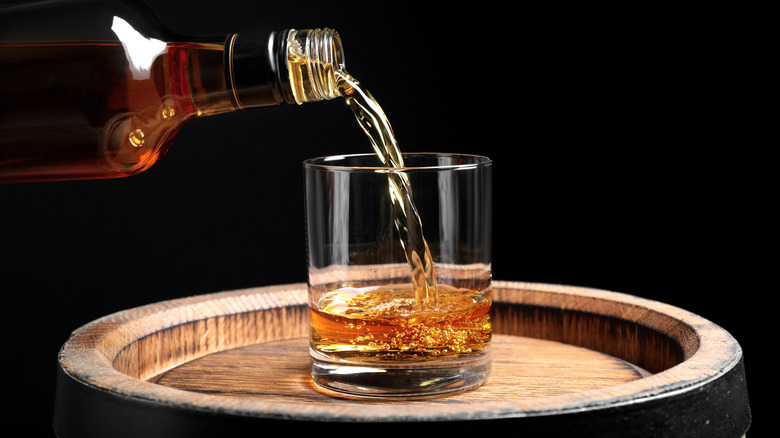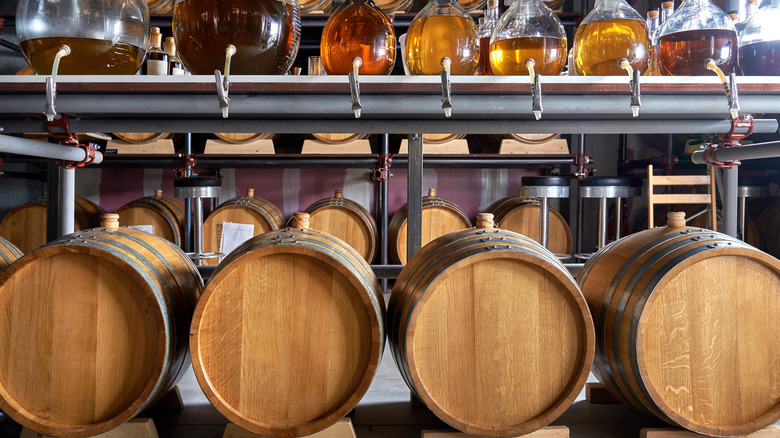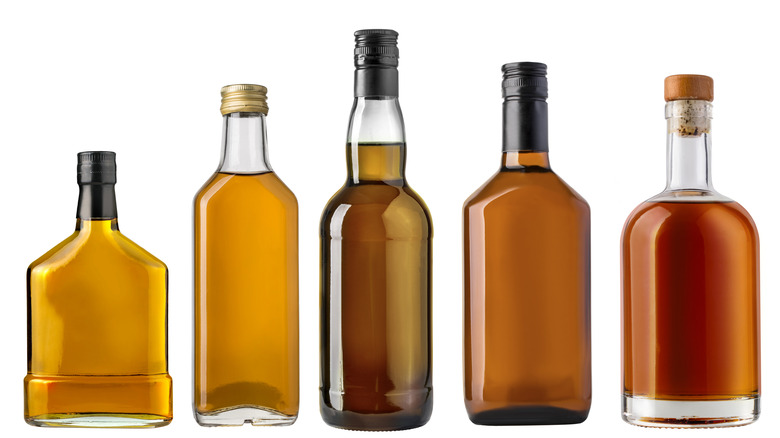What Is Bourbon Made From, Actually?
There are a lot of important creations that have come from the United States: basketball, yellow school buses, and chocolate chip cookies, for example. But perhaps the greatest American invention of them all (depending on who you ask, of course) is bourbon whiskey. Bourbon is full, sweet, and velvety — perfect for shaking up in a whiskey sour, stirring in a Manhattan, or just enjoying on its own.
The words bourbon and whiskey are often used interchangeably, but this isn't exactly correct. To quote marathon champ Des Linden at a press conference: "Bourbon is whiskey, Larry." Whiskey is a vast spirit category that encompasses many different types, including bourbon, rye, Scotch, Irish whiskey, Japanese whisky, and more. The spirit is made all over the world and the type of grain used varies by region and style of whiskey, but all whiskies have two things in common: They must be distilled from grains and they must be aged in oak barrels.
Since whiskey was one of the first liquors distilled in the States, many drinks in the American cocktail canon feature bourbon as the star. Kentucky started as the bourbon capital of the U.S., but today, bourbon can be made anywhere in America, as long as it consists of at least 51% corn.
What designates a whiskey as bourbon?
Bourbon is distilled from a combination of grain, yeast, and water. "Mash" is the crushed grain leftover from the fermentation process, and the "mash bill" is the mix of grains used in making whiskey. Every whiskey has its own unique mash bill, depending on the distiller's preferences. In the case of bourbon, the mash bill must have at least 51% corn, though most bourbons on the market contain 60 to 86% corn. Other common grains used in the mash bill are rye, wheat, and barley.
There are special requirements when it comes to aging bourbon. While there aren't any regulations for how long a bourbon has to be matured, it must be aged in charred new oak barrels. To be labeled a "straight bourbon," it has to be aged for at least two years.
The law also stipulates rules about the amount of alcohol in bourbon. It has to be distilled at a maximum of 160 proof (80% ABV), barreled at a maximum of 125 proof (62.5% ABV), and bottled at a minimum of 80 proof (40% ABV) with a maximum of 150 proof (75% ABV). Most bourbons are in the 40 to 50% ABV range, so they're strong, but not burn-your-eyebrows-off strong.
Finally, there are zero artificial flavorings or colorings allowed in the bourbon industry. The rich brown color of the liquid comes purely from the barrel itself, and the compounds in the charred oak give bourbon its signature vanilla and caramel notes.
What types of bourbon are there?
The majority of bourbons are considered straight bourbons. Even though it can be made anywhere in the U.S., more than 95% of all bourbon comes from Kentucky, and most Kentucky bourbons are straight bourbon.
There's also something called "bottled-in-bond" bourbon. Bottled-in-bond has the most restrictive origin statement within American whiskey. It must be made according to a set of legal regulations, including being aged in a federally bonded warehouse under government supervision for at least four years. Bottled-in-bond bourbon must be bottled at 100 proof (50% ABV), so it's extreme in a lot of ways.
"High rye" bourbons are becoming more popular as well. Bourbon is often sweeter than rye whiskey, which is spicy due to its high amount of rye grain. High rye bourbons have a large proportion of rye in the mash bill, so they'll be spicier than classic bourbon, but not as sharp as an average rye whiskey. Other bourbons you'll see on the liquor store shelf might include "single barrel" (bourbons bottled from a single cask), "small batch" (bourbons made from a small number of choice barrels), and "wheated" (bourbons that contain a high amount of wheat).
So the next time you're feeling corny, pour yourself a glass of bourbon. No matter which type of bourbon you choose for your next old fashioned, now you'll know exactly what you're sippin' on.


